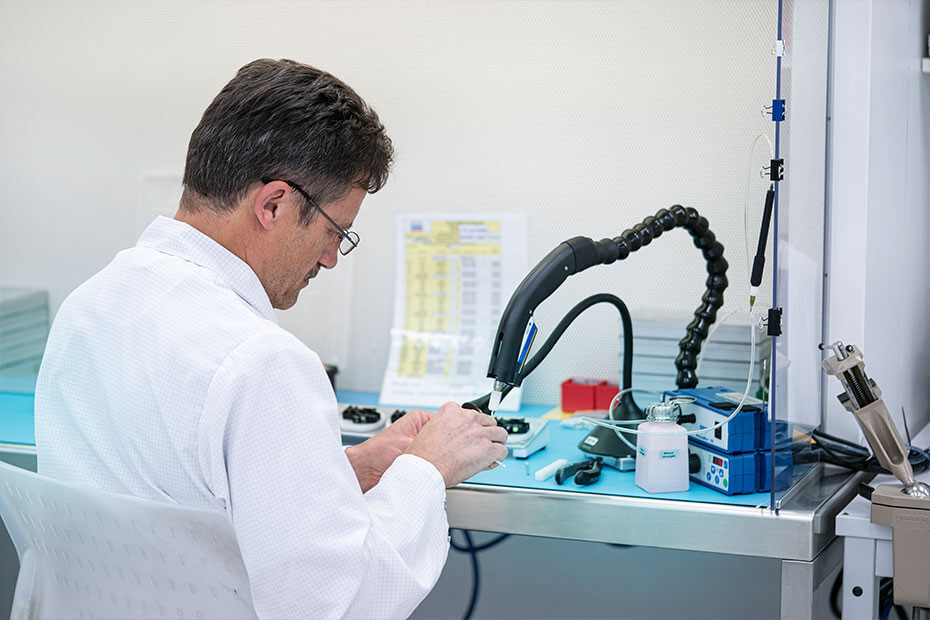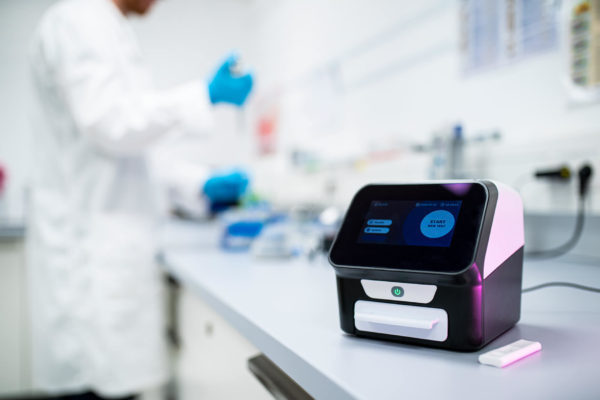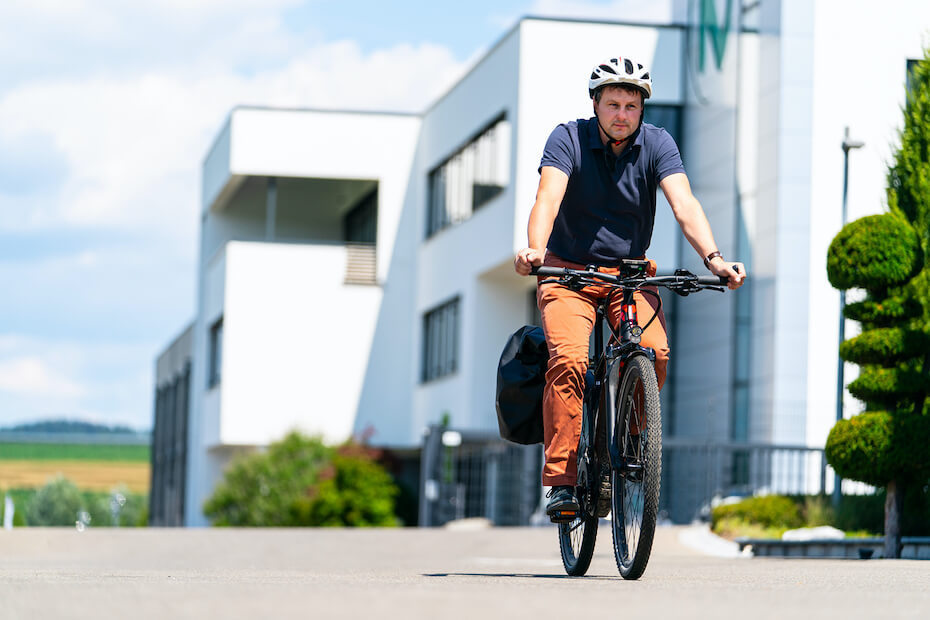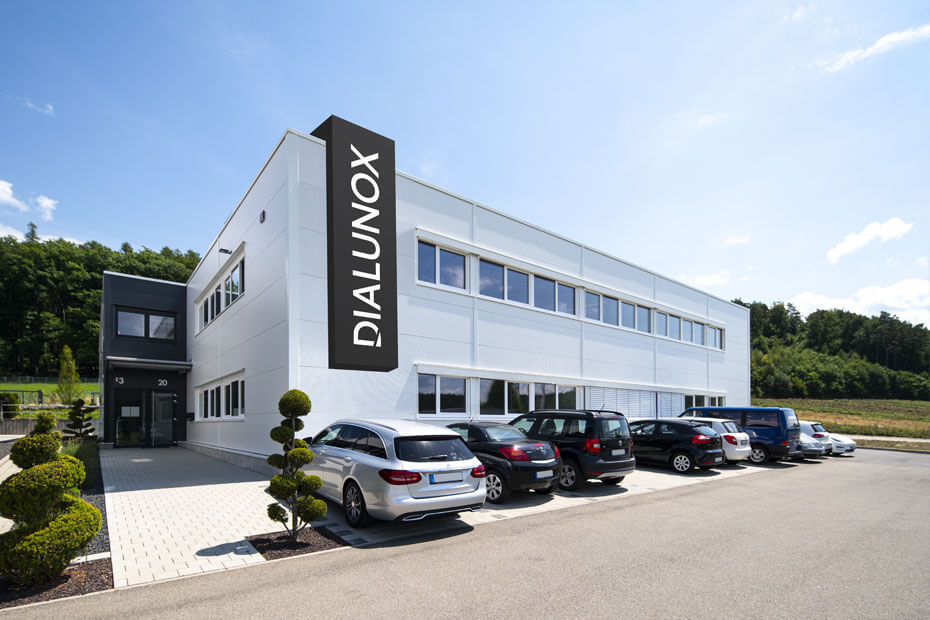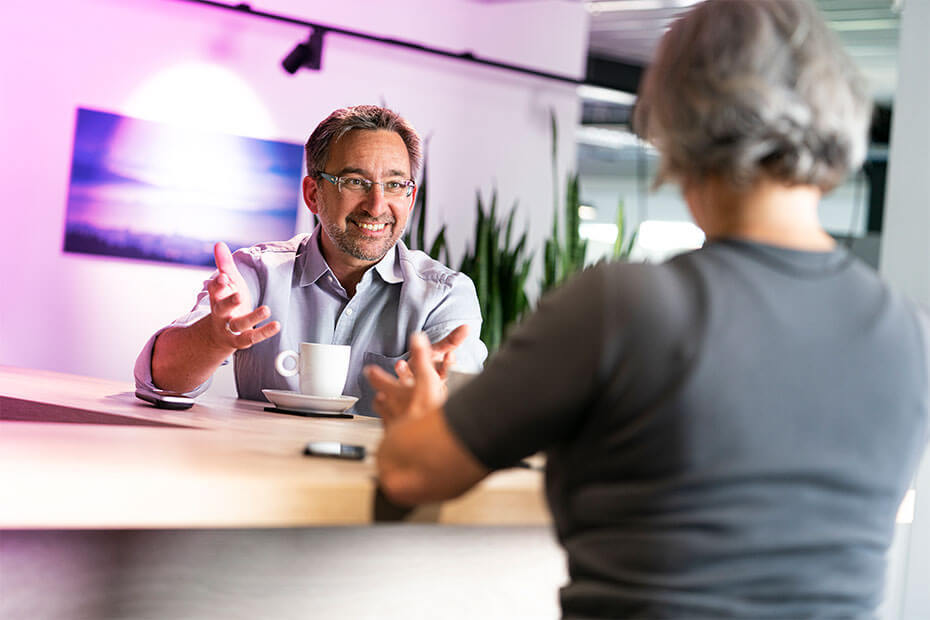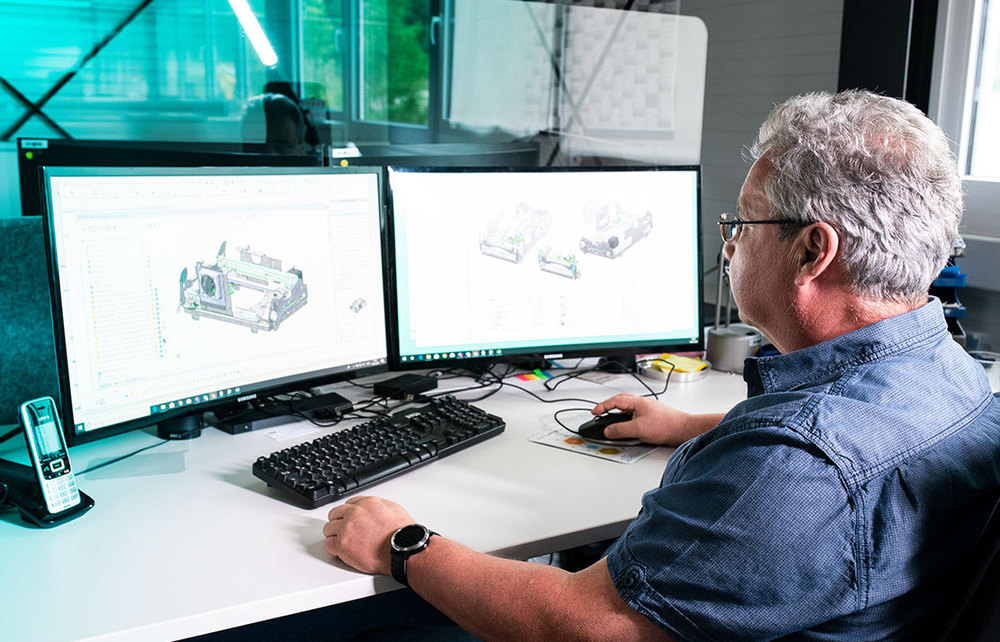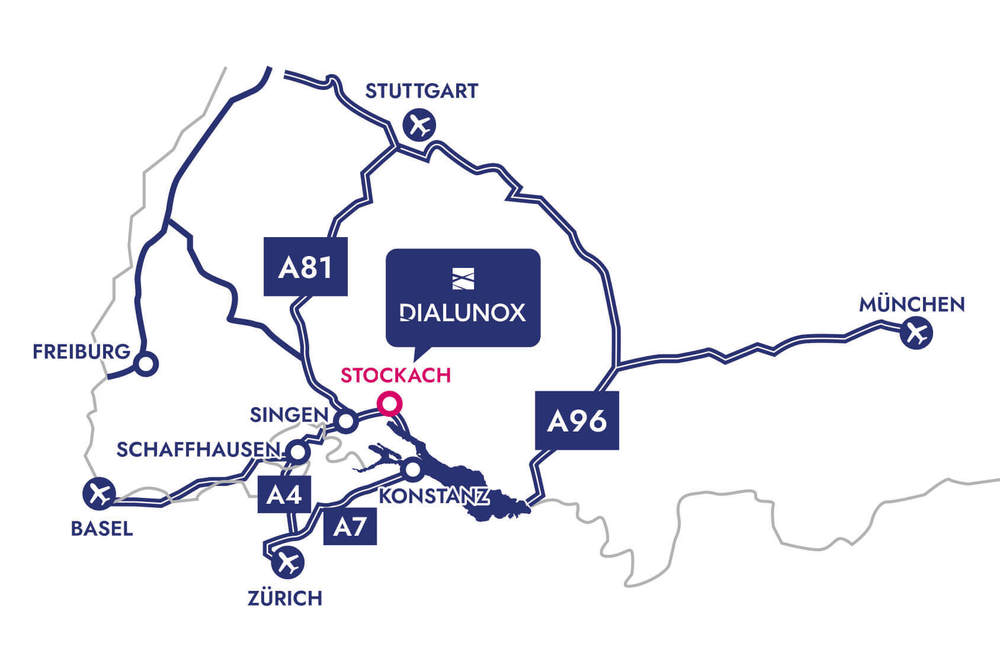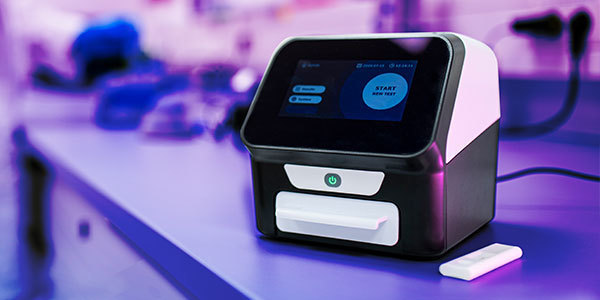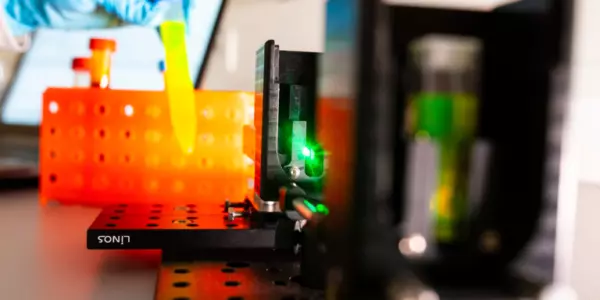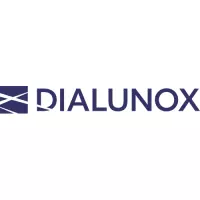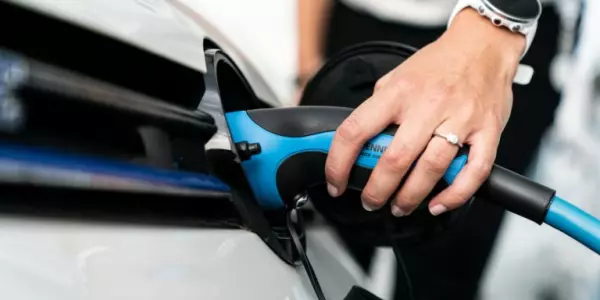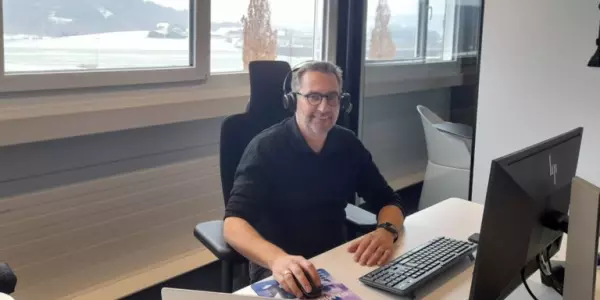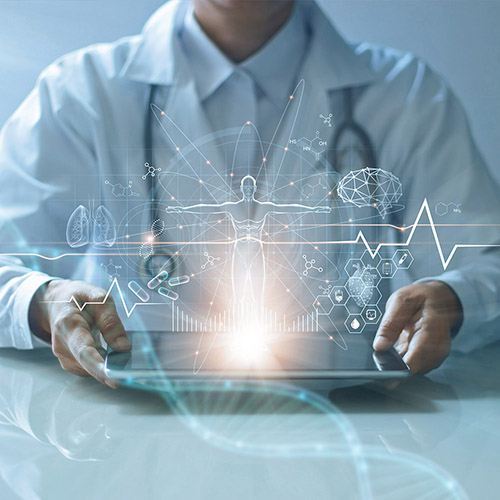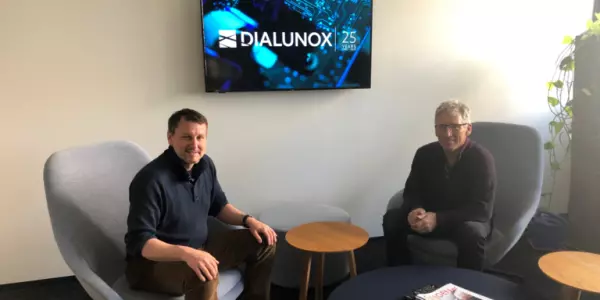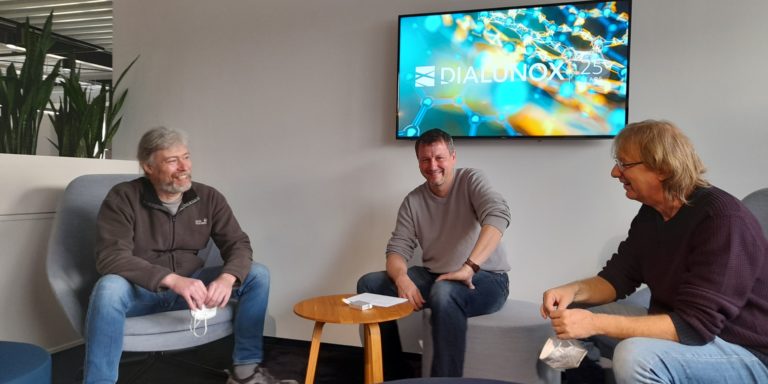
Tommy, how did you end up founding ESE in the first place? How did you and Klaus Haberstroh (also co-founder and managing director) come up with the idea?
Thomas Wiest (ThWi): Really crazy story... We both worked together at Perkin Elmer for almost ten years and developed the Lambda 900 (a spectrophotometer, editor's note) that we have here, for example. So we could already look back on 10 years of joint experience. Access instrument, software and optics. And then Perkin Elmer made the decision to relocate all the know-how to the USA and we realized that there really was no future for us in the old plant in Überlingen. So we then decided, supported by the management at the time with an order guarantee for the first few years, that we would go into business for ourselves.
Does that mean you didn't start entirely out of the blue?
ThWi: No, we had a soft exit. Since I was always well informed about software issues in the new company, I was able to process the orders for us while Klaus could take care of the acquisition of new projects. After about a year we were able to win CIBA as a customer and I have to say it was a really crazy story: Klaus went on a mountain tour with a friend and he asked him if he knew anyone who could measure UV? "We!" said Klaus, and that's how we came to CIBA, which actually financed our company.
Where and also how did you work in the early years, ignoring the products? I could imagine that in the early years the way of working was different from what it is today?
ThWi: For me, the working method was always the same. But back then, of course, at the beginning we didn't have any rooms. We were in Klaus's holiday apartment and worked in a 20 square meter room, two people, five computers and in the summer it could get up to 40 degrees warm there. And when CIBA started, we grew very quickly and soon moved to the old watch factory in Ludwigshafen on Mühlbachstrasse.
Question for yourself, Thomas... You've been here for 20 years now. How have you experienced the change in the company to date and how has the company changed?
Thomas Wenzler (ThWe): Over the years it felt as if I had been to umpteen different companies because there was so much change in technology. We've just had it from the beginnings of CIBA, through the web server, through solar system control, to the fluorescence measuring devices and lateral flow devices as we have them today.
ThWi: And then the multireader (isothermal measuring device) was added in 2012...
ThWe: So on the one hand technologically, but on the other hand, let's say organizationally and personally. At first it was ten people, everyone knew everyone and once it starts to grow you can't know everyone anymore. And then a real change began from small and familiar to bigger and bigger with certain structures and also with certain departments in which not everyone can do everything anymore because it's just too much. Yes, and I have to say that it's really a bit like saying you've worked in a wide variety of companies.
What have been your personal highlights in your active time so far from ESE to QIAGEN to DIALUNOX today?
ThWe: There are many highlights. One of the highlights that I found the funniest was the Bluetooth thing. Everyone knows Bluetooth these days. But I was doing my thesis on it back then, and Bluetooth existed for exactly five years. So Bluetooth was created around the same time as the ESE was created. I think it was 1998...
At that time nobody talked about it...
ThWe: That's right, there were very few smartphones that had Bluetooth in them and this first fluorescence measuring device for CIBA was a Bluetooth device. It was battery operated and you could put the device on the table and do firmware updates over the air. That was in 2002/2003 when we started with Bluetooth. In 2002 I also visited the CEBIT trade fair and got in touch with a company that no longer exists because it was bought out. The company was called National Semiconductor and we got the development samples from Japan from them. And the funny thing is, it was in euros


